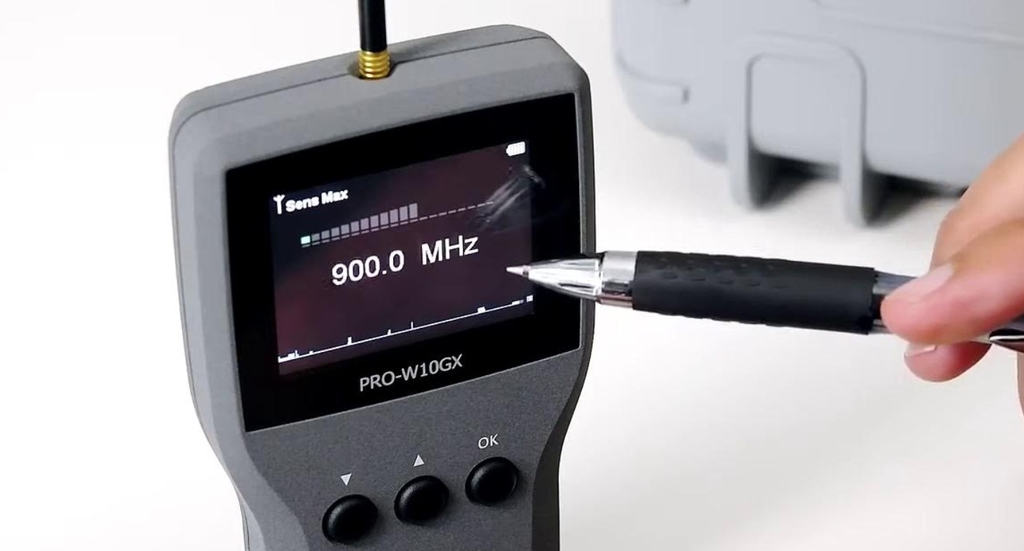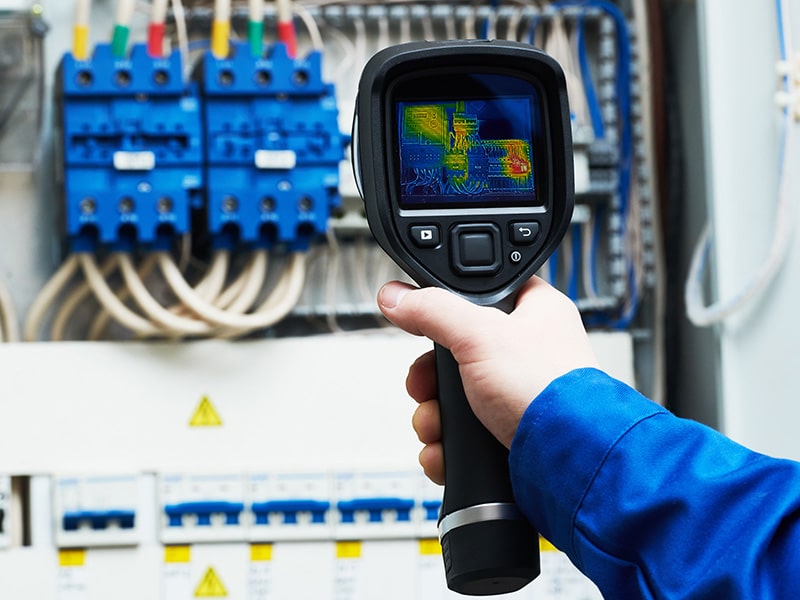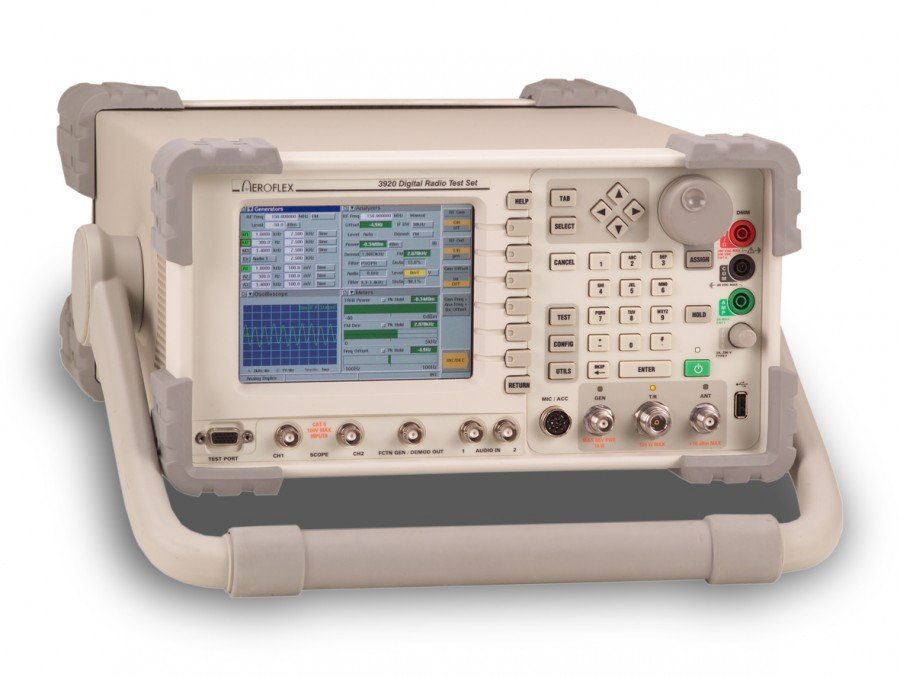How to Find a Listening Device in Your Car?
Do you ever get that eerie feeling that your private conversations aren’t so secret after all? As technology advances, the threat of covert eavesdropping has grown more sophisticated than ever before. Whether you’re a high-profile individual or value your personal space, the idea of someone clandestinely planting a listening device in your car is enough to send shivers down anyone’s spine.
But here’s the good news: you don’t have to be a secret agent or a tech genius to level the playing field. In this article, we’re about to remove the curtain on counter-surveillance. We’ll guide you through the best, most effective methods for detecting listening and recording devices in your vehicle, empowering you with the knowledge to regain your privacy and peace of mind. So, buckle up because reclaiming your personal space will take some exhilarating twists and turns!
Using a RF (Radio Frequency) Detector
RF (Radio Frequency) detectors are essential tools in counter-surveillance. They operate on the principle that many listening devices, such as a hidden microphone or miniature radio transmitter, emit radio frequencies while in use. RF detectors are typically designed to pick up and alert you to these radio signals, enabling you to detect listening devices in cars or other areas.
Here’s a simplified explanation of how RF detectors work:
- Scanning for Signals: When you turn on an RF detector, it begins scanning a range of radio frequencies. These frequencies cover a spectrum, from low frequencies (like AM and FM radio) to much higher ones, including those used for wireless communication.
- Signal Strength Indication: As the detector scans, it measures the strength of radio signals within its range. In a typical environment, it might encounter signs from various sources like cell phones, Wi-Fi networks, and other electronic devices.
- Alerting to Unusual Signals: When the RF detector encounters an unusual signal that matches the characteristics of a listening device or a wireless transmitter, it triggers an alert. This alert can take the form of a visual display, an audible tone, or both, depending on the detector’s design.

Using RF Detectors to Detect Listening Devices in Cars
Detecting listening devices in cars using RF detectors requires a systematic and careful approach. Here’s how you can effectively use an RF detector:
- Prepare Your Environment: To minimize interference, ensure your car’s engine, radio, and other electronic devices are turned off.
- Select the Right Detector: Choose an RF detector suitable for your needs. Some detectors are designed for general use, while others specialize in specific frequency ranges. Make sure your detector covers the appropriate frequency bands for listening device detection.
- Start the Sweep: Hold the RF detector and sweep it around your car’s interior. Pay particular attention to common hiding spots for listening and recording devices, including the dashboard, seats, door panels, and the trunk.
- Slow and Steady: Move the detector slowly and steadily to give it time to scan each frequency thoroughly. Monitor the detector’s display or listen for any alert signals.
- Repeat the Sweep: If the detector alerts you to a signal, go back over that area to pinpoint the source more accurately. If possible, switch to a different detector mode (some have multiple modes for different signal types) to confirm the presence of a listening device.
- Investigate Further: If your detector consistently alerts to a specific area without an obvious explanation (e.g., a known nearby radio station or Wi-Fi network), it may warrant further investigation. Check for any unusual objects or wires in that area.
- Document Your Findings: Record the detector’s alerts, including the frequencies detected and the locations within your car. This information can be valuable if you need to report the presence of a listening device to authorities or security professionals.
Remember that while RF detectors are powerful tools for detecting listening devices, they may not be foolproof. Some sophisticated listening devices can be designed to operate on frequencies that RF detectors do not cover. If you have strong suspicions or need the utmost confidence in your sweep, consider consulting with professional counter-surveillance experts who can employ various methods to ensure your vehicle is free from covert surveillance.
Using an Infrared Scanner
An infrared (IR) scanner, also known as a thermal imaging camera or IR camera, is a device that captures and converts infrared radiation (heat) emitted by objects into a visible image. It operates on the principle that all objects with a temperature above absolute zero (-273.15°C or -459.67°F) emit infrared radiation. In detecting listening devices in cars, IR scanners are used to identify heat signatures that may indicate the presence of hidden electronic components or listening devices.
How an Infrared Scanner Works?
- Infrared Radiation Emission: All objects emit infrared radiation in proportion to their temperature. Warmer objects emit more radiation, while cooler objects emit less. Infrared scanners detect this radiation.
- Infrared Sensors: An IR scanner has sensors that capture incoming infrared radiation. These sensors are typically part of a special camera sensor array.
- Image Processing: The captured infrared radiation data is processed by the device’s internal computer. It assigns colors to different temperatures and creates a thermal image.
- Display: The thermal image is displayed on the scanner’s screen, with warmer objects appearing as brighter colors (typically in shades of red, orange, or yellow), and cooler areas appearing as darker colors (usually in shades of blue or purple).

Using an Infrared Scanner to Detect Listening Devices in Cars
IR scanners can be valuable tools for uncovering potential listening and recording devices or electronic components in a vehicle. Here’s how to use an IR scanner effectively:
- Preparation: Ensure that your car’s engine and electronic devices are turned off to reduce background heat sources that could interfere with the scan.
- Dark Environment: For the best results, perform the scan in a dark environment. This helps to highlight temperature differences more clearly.
- Start the Scanner: Power on the IR scanner and hold it in your hands. Point the camera toward areas inside the car where you suspect listening devices might be hidden. Focus on common hiding spots like the dashboard, driver’s seat, door panels, and trunk.
- Monitor the Display: As you scan, monitor the display for any unusual heat signatures or temperature anomalies. Please pay attention to areas that appear significantly warmer than their surroundings.
- Compare and Investigate: Compare the thermal image to known temperature readings in your car. Hot spots that natural temperature variations or vehicle components cannot explain might indicate the presence of electronic devices or hidden wiring.
- Document Findings: Take photos or record video footage of the thermal images showing potential hot spots. This documentation can be useful for further analysis or reporting to authorities or security professionals.
- Repeat and Confirm: If you identify potential hot spots, repeat the scan from different angles to confirm the findings. Sometimes, a different perspective can provide a clearer understanding of the situation.
Bug sniffing dogs, also known as electronic detection dogs or EDDs, are highly trained dogs with an exceptional ability to locate electronic devices, including listening devices, hidden in various environments. These dogs are often employed by law enforcement agencies, private security firms, and individuals who require meticulous bug sweeps to ensure their privacy.
Training bug-sniffing dogs is a meticulous and structured process. It typically involves the following steps:
- Foundation Training: Before focusing on electronics detection, these dogs undergo basic obedience training to ensure they are well-behaved and responsive to commands.
- Scent Familiarization: Dogs are introduced to the unique scents associated with electronic devices. They learn to distinguish these scents from other odors.
- Search Techniques: Handlers train the dogs to use their keen sense of smell in systematic searches. Dogs learn to search vehicles, rooms, or even open areas, depending on the specific needs of their work.
- Positive Reinforcement: Training relies heavily on positive reinforcement, with dogs being rewarded with treats or playtime when they successfully identify an electronic device.
- Simulated Scenarios: Dogs are exposed to various real-life scenarios, including different environments and situations where hidden devices may be present.
Detecting Listening Devices in Cars
Bug-sniffing dogs can excel in finding listening devices hidden in cars due to their remarkable olfactory capabilities. Here’s how they do it:
- Scent Recognition: Dogs can recognize the distinct scent of electronic components, batteries, and circuitry in listening devices.
- Systematic Search: The handler guides the dog through the vehicle in an organized manner, ensuring every area, including the interior and exterior, is thoroughly inspected.
- Alert Behavior: When a bug-sniffing dog detects a hidden listening device, it will exhibit specific alert behaviors, such as sitting or pawing at the location where the device is hidden.
- Minimized False Positives: The rigorous training dogs undergo helps minimize false positive alerts, ensuring reliable and accurate results.
- Versatility: These canine detectives can search various car parts, including under seats, in the dashboard, and even within the engine compartment.
The advantage of using bug-sniffing dogs is not only their exceptional accuracy but also their ability to navigate tight spaces and detect devices hidden from human view. They provide an additional layer of security and peace of mind for those concerned about their privacy and the presence of covert listening devices.
Performing an Amplitude Modulation (AM) Radio Test
An Amplitude Modulation (AM) Radio Test is a simple yet effective method to check for the presence of certain types of listening devices, particularly those that might emit radio frequencies or electromagnetic interference. This test involves using an AM radio to detect unusual sounds or interference that may indicate the presence of hidden electronic surveillance devices in your car.
Here’s how to perform an AM Radio Test to detect if your car has a listening device:
What You’ll Need:
- An AM radio (the older, analog type with a tuning dial is preferred).
- A quiet location, ideally away from other electronic devices and interference.
Steps to Perform an AM Radio Test:
- Prepare Your Environment: Park your car in a quiet, open area away from strong radio signals or electronic interference. Turn off your car’s engine and any electronic devices inside.
- Tune Your AM Radio: Set your AM radio to a frequency with only static or white noise. Avoid stations with broadcasts.
- Begin the Test: Hold the AM radio and walk around your car’s interior, slowly moving it closer to various parts of the vehicle. Pay special attention to common hiding spots for listening devices, such as the dashboard, light fixtures, seats, door panels, and the trunk. Move the radio methodically, ensuring you cover the entire interior.
- Listen for Anomalies: As you move the radio near different areas of the car, listen carefully for any unusual sounds or interference. This could manifest as static, buzzing, popping, or clicking noises.
- Note Any Suspicious Signals: If you hear any unexpected noises or interference while scanning specific areas of your car, make a mental or written note of those locations.
- Repeat the Test: After scanning the entire car, repeat the test to confirm any suspicious signals. Go back to areas where you heard unusual noises and check if they persist.
- Investigate Further: If you consistently hear unusual sounds in a particular area, inspect that part of the car more closely. Look for any unfamiliar objects, wires, or modifications.
It’s important to note that while an AM Radio Test can be a useful preliminary check, it may not detect all types of listening devices, especially those that do not emit radio frequencies. Therefore, it should be one part of a comprehensive approach to ensure your vehicle’s security and privacy. If you have strong concerns or need expert assistance, consult with professionals experienced in counter-surveillance.

Hiring a Professional Sweeping Services
A professional sweeping service, also known as a bug sweep or electronic counter-surveillance service, is a specialized service trained professionals provide to detect and locate hidden listening devices, surveillance equipment, or electronic eavesdropping devices in various environments, including vehicles like cars. These professionals use a combination of advanced tools and expertise to ensure the privacy and security of their clients.
Professional sweeping services follow a systematic and thorough approach to checking for listening devices in your car:
- Initial Consultation: The process typically begins with an initial consultation where you discuss your concerns, the scope of the sweep, and any specific areas of suspicion within the vehicle.
- Risk Assessment: The professional will conduct a risk assessment to determine the likelihood of surveillance and threat level. This assessment helps tailor the sweep to your specific needs.
- Physical Inspection: The sweep usually starts with a physical inspection of the car’s interior and exterior. Professionals look for any signs of tampering, unusual wires, or devices that may have been added to the vehicle.
- RF (Radio Frequency) Detection: Specialized RF detection equipment, such as RF spectrum analyzers or RF bug detectors, is used to scan for radio frequency signals that might emanate from listening devices. They will check various frequency bands for anomalies.
- Infrared Scanning: Infrared scanners may be used to detect heat signatures indicating the presence of electronic components or unusual heat sources. This can help identify concealed devices.
- Visual Inspection: A visual inspection includes examining the car’s interior for hidden compartments, suspicious objects, or modifications that might hide listening devices.
- Audio Analysis: Professionals may conduct audio tests to detect acoustic anomalies or unusual sounds within the vehicle that could indicate eavesdropping.
- GPS Tracking Device Detection: If necessary, professionals may use specialized equipment to detect GPS tracking devices that could be used for surveillance or tracking.
- Documentation: Throughout the process, the professionals document their findings, noting any suspicious devices, signals, or physical evidence.
- Consultation and Remediation: Once the sweep is complete, the professionals provide you with a detailed report of their findings. If they discover listening devices, they can advise on the appropriate next steps, including legal action, device removal, or countermeasures.
The cost of the service is often a worthwhile investment in safeguarding your privacy and security, particularly in situations where you suspect your vehicle may have been compromised. Additionally, many reputable sweeping services prioritize client confidentiality and handle each case with discretion, ensuring that sensitive information remains protected. Ultimately, the peace of mind that comes with knowing your car is free from covert surveillance is invaluable, making professional sweeping services a vital resource for those who prioritize their privacy and security.
👉 It can be interesting for you: How to turn on a mic remotely?
Conclusion
Covert surveillance, including the use of hidden listening devices, is a reality that demands proactive measures to protect your personal space, conversations, and sensitive information. If you think someone can listen to your conversations, this text will be useful for you. This article has explored various methods, from RF detectors to bug-sniffing dogs and infrared scanners, empowering you to take charge of your privacy and security. With the knowledge and tools provided here, you now have the means to detect and mitigate the risks posed by listening devices, even in your car—a space that should always remain private!
FAQ
What Are Listening Devices, and Why Are They a Concern in Cars?
Listening devices, also known as bugs or wiretaps, are covert electronic devices used to eavesdrop on conversations. They are a concern in cars because they can compromise your privacy during private conversations, reveal sensitive information, or even pose security risks.
How Can I Tell if My Car Has a Listening Device?
There are several methods to detect listening devices in cars, including using RF detectors, bug-sniffing dogs, infrared scanners, and more. Our article provides a detailed guide on these methods.
Are There Signs or Symptoms That Might Indicate a Listening Device in My Car?
While there are no definitive physical symptoms, common signs include unexplained battery drainage, unusual electronic interference, or strange noises during conversations.
Can I Use My Smartphone as a Listening Device Detector?
Yes, you can use your smartphone and specific apps to measure cellular signal strength or interference. However, specialized counter-surveillance equipment often provides more accurate results.
How Often Should I Perform a Sweep for Listening Devices in My Car?
Regular sweeps for listening devices are recommended, especially if you are concerned about privacy. The frequency depends on your level of suspicion and the nature of your activities.
What if I Find a Listening Device in My Car?
If you detect a listening device, do not tamper with it. Contact law enforcement or a professional counter-surveillance expert for assistance. Tampering with such devices may have legal implications.
Are There Legal Concerns When Detecting Listening Devices in Cars?
The laws regarding detecting listening devices vary by jurisdiction, and it’s crucial to understand the legal framework in your area. In some places, it may be illegal to use certain detection methods without proper authorization.
Can I Purchase Counter-Surveillance Equipment for Personal Use?
Yes, you can purchase counter-surveillance equipment for personal use in many regions. Be sure to use such equipment responsibly and by local laws.
How Effective Are Bug-Sniffing Dogs in Finding Listening Devices in Cars?
Bug-sniffing dogs are highly effective in locating electronic components and hidden devices. They are especially useful in cases where devices emit electronic or chemical odors.
What Precautions Should I Take After Finding a Listening Device in My Car?
After detecting a listening device, avoid discussing sensitive information in your car and consider having your vehicle professionally inspected for additional devices. Consult with legal professionals if necessary.
No one has left a comment yet, be the first